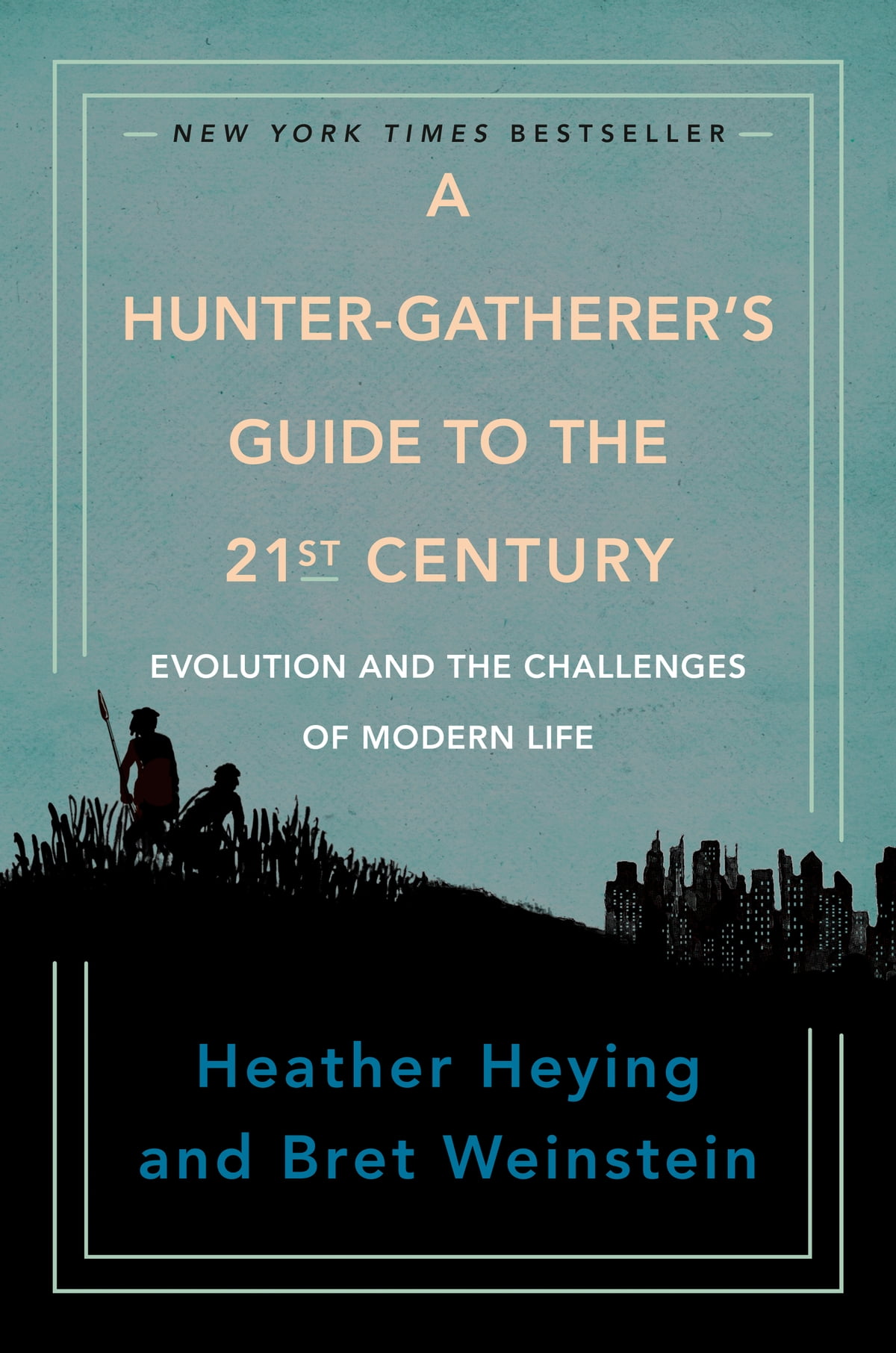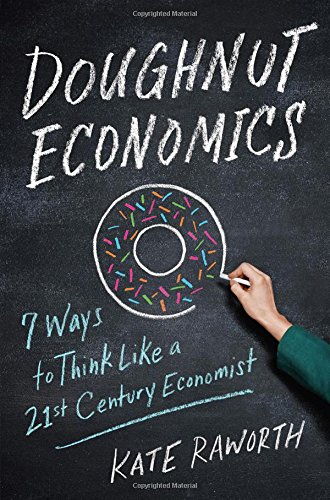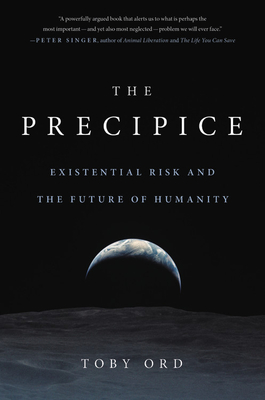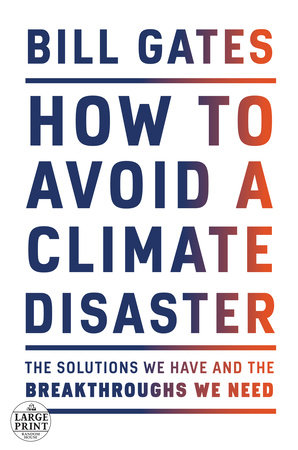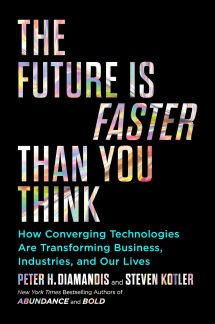A Crack In Creation
by Jennifer Doudna & Samuel Sternberg
- Science
- Ashto =
- Jonesy =
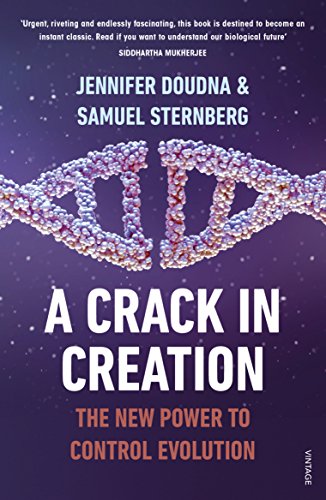
A Crack in Creation offers us insights into the newest and arguably most effective genetic engineering tool, CRISPR-CAS9. Thanks to CRISPR, an organism’s entire DNA content — including all its genes — has become almost as editable as a simple piece of text. The biological world is undergoing profound and human-induced changes.
For billions of years, life progressed according to Darwin’s theory of evolution. Organisms developed through a series of random genetic variations. Some of them conferred advantages in survival, competition, and reproduction.
When agriculture emerged 10,000 years ago, humans began biasing evolution through the selective breeding of plants and animals. But, the random DNA mutations that constituted the available genetic variations were still generated spontaneously and randomly. As a result, our species’ efforts to transform nature were halting. But, scientists have succeeded in using biotechnology tools to tinker with DNA inside living cells. They can now manipulate and rationally modify the genetic code that defines every species on the planet, including our own.
What can we expect from CRISPR?
Scientists can use CRISPR to insert, edit, or delete the associated gene in virtually any living plant or animal’s genome. They just need to identify the genetic code for a particular trait. This process is far simpler and more effective than any other gene manipulation technology in existence. Practically overnight, we have found ourselves on the cusp of a new age in genetic engineering and biological mastery.
The animal kingdom has been the first and so far the biggest proving ground for this new gene-editing tool.
- Scientists have harnessed CRISPR to generate a genetically enhanced version of the beagle. They created dogs with Schwarzenegger-like super muscular physiques by changing the DNA single letters to a gene that controls muscle formation.
- Researchers have also created micro pigs no bigger than large cats by inactivating a gene in the pig genome that responds to growth hormone. They have done similar things to goats by editing the genome with CRISPR to grow more muscles, yield more meat, and grow longer hair.
- Geneticists are even using CRISPR to transform Asian elephant DNA to resemble the woolly mammoth DNA — with the hope of resurrecting this extinct beast.
Meanwhile, in the plant world, CRISPR has been widely deployed to edit crop genomes. It is paving the way for agricultural advances with the potential to dramatically improve people’s diet and shore up the world’s food security. For example, gene-editing experiments have produced disease-resistant rice, soybeans with healthier contents, and potatoes with fewer neurotoxins. Food scientists are achieving these improvements by making a couple of changes to a few letters of the organism’s own DNA with fine-tuned genetic upgrades.
In the health world, some of the benefits are paradoxically coming from using CRISPR on animals or insects. CRISPR experiments are looking to humanise the DNA of pigs, with the hope that pigs could be organ donors for humans. They are also driving new traits into mosquito populations to eliminate illnesses like Malaria and Zika, or even wipe out the whole species.
To treat many diseases, CRISPR also offers the potential to edit and repair mutated genes directly in human patients. In lab-grown human cells, scientists used this new gene-editing technology to correct mutations responsible for sickle cell, blindness, and immunodeficiencies among loads of different orders. For instance, CRISPR can treat HIV/AIDS either by cutting the virus’s DNA out of a patient’s infected cells or by editing the patient’s DNA so that the cells avoid infection altogether. Physicians have also begun treating some cancers with souped-up immune cells to hunt down cancer cells.
Gene editing holds the promise of life-changing treatments and life-saving cures. CRISPR enables scientists to accomplish such feats by finding and fixing incorrect letters of DNA out of the 3.2 billion letters that make up the human genome. And it can perform even more complex modifications.
The Debate
There are other profound implications of CRISPR technology in the germline. The CRISPR tech is so simple and efficient that scientists could exploit it to modify the human germline. Other than treating diseases in living humans, it can also prevent diseases in future humans by forever altering the genetic composition in humankind. The next stream of genetic information then connects one generation to the next. Have no doubt, scientists can use this someday to create a heritable genome of our species.
Assuming gene editing in humans proves to be safe and effective, it might seem logical and even preferable to correct disease-causing mutations at the earliest possible stage of life — before harmful genes begin wreaking havoc. Should we then begin editing genes in unborn children to lower their risk of heart disease, Alzheimer’s diabetes, or cancer? What about endowing unborn children with beneficial traits, like greater strength and increased cognitive abilities, or changing physical traits like eye and hair colour? The quest for perfection seems almost intrinsic to human nature, and if we start down this slippery slope, we may not like where we end up.
Gene editing forces us to grapple with the tricky issue of where to draw the line when manipulating human genetics. Some people may view any form of genetic manipulation as heinous — a perverse violation of sacred laws of nature and dignity of life. Others may see the genome simply as software — something we can fix, clean update and upgrade — and argue that leaving human beings at the mercy of faulty genetics is not only irrational but immoral.
For the first time after 100,000 years of modern human’s existence, we possess the ability to edit the DNA of every living human and their future generations. It is beyond our comprehension and it forces us to confront an impossible but essential question.
What will we, a fractious species whose members can’t agree much, choose to do with this awesome power?
How Genome Sequencing Works
The genome is a term coined in 1920 by the German botanist, Hans Winkler. It refers to the entire set of genetic instructions found inside a cell and is mostly identical from cell to cell within any given organism. Aside from the occasional mutation, the genome tells all living things how to grow, sustain themselves, and transmit genes to the offspring. One organism’s genome directs it to grow fins and gills that let it move and breathe underwater. Another organism’s genome instructs it to produce leaves and chlorophyll to harvest energy from sunlight. Our intrinsic physical traits — eyesight, height, skin colour, predisposition to disease, etc. — are the result of information encoded in our genes.
The genome contains a molecule called deoxyribonucleic acid, otherwise known as DNA. It has 4 different building blocks and these blocks are known as the familiar letters of DNA: A (adenine), G (guanine), C (cytosine), T (thymine). Long and linear strands connect these letters, and two of them come together to form the famous double helix structure of DNA, revealing the molecular basis of heredity. This is how a relatively simple chemical like DNA can transmit genetic information to daughter cells upon cell division.
The human genome is composed of 23 distinct pieces — called genomes/chromosomes — which have 50 – 250 million letters. Like the cells of most mammals, human cells contain two copies of each chromosome, one from the father and one from the mother. Mutations in any one of the 23 chromosome pairs can cause genetic disease. The simplest mutation is a substitution that swaps one letter for another. But this tiny change has consequences. For example, the difference of just 10 atoms is dire because it can change the shape of red blood cells, therefore increasing the risk of stroke and infection, and giving severe bone pain.
Fortunately, due to the recent advent of DNA sequencing, we now understand how genetics may cause diseases.
Beginning in 1990, scientists around the world teamed up to sequence the entire human genome, which cost $3 billion and took a decade to process. Since the project, the process of DNA and sequencing has become staggeringly quick, cheap, and effective. Scientists have identified over 4,000 different kinds of DNA mutations that cause genetic disease. Sequencing can tell individuals if they’re at elevated risk of developing certain types of cancers and help them tailor specific treatments to match their genetic backgrounds.
The sequencing today costs just a few hundred dollars per test and all you need to do is drop your saliva in the mail. This has resulted in an explosion of data that has helped researchers pinpoint significant associations between thousands of gene variants and a number of physical and behavioural traits.
While genome sequencing represents a huge development in the study of genetic disease, it is ultimately a diagnostic tool, not a form of treatment. Even though it has allowed us to see how genetic diseases are written in the language of DNA, it leaves us powerless to change that language. After all, it is one thing to learn how to read and another thing to learn how to write.
Going Forward
In 1931, Aldous Huxley wrote a dystopian fiction, Brave New World, which implied that the power to control our species’ genetic future is both awesome and terrifying. Deciding how to handle it might be the biggest challenge we’ve ever faced and it’s only the beginning.
Even in countries with comprehensive health care systems — where people from all classes could benefit from germline editing — there is a risk of giving rise to unforeseen genetic inequalities. The wealthy would be able to perform the procedure more often and transmit any beneficial gene modifications to their offspring. In this scenario, the linkages between class and genetics would grow from one generation to the next. This can create a new “gene gap” that could only widen over time.
If you think the world is unequal today, imagine if it stratified along both socioeconomic and genetic lines. Envision a future where wealthy people live healthier and longer lives — thanks to their privileged sets of genes. It may seem like science fiction now but it can become reality.




